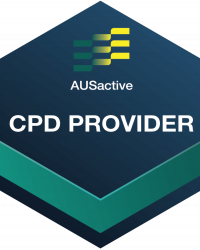Mat Repertoire
Warm Up:
Abdominal Oblique Preparation
Alternate Names
Chest Lift with Rotation, Oblique Curl
Derived From
Mat Pilates: The Hundred
Primary Element
Warm
Why for Primary?
To develop range of motion in thoracic flexion and shoulder extension and warm up the abdominal oblique muscles for further work in the program as well as develop control in the deep abdominal muscles transversus abdominis to create pelvis and torso stability.
Secondary Element
Stability
Why for Secondary?
To develop control in the deep abdominal muscles transversus abdominis to create pelvis and torso stability.
Tertiary Element
N/A
Why Tertiary?
N/A
Repetitions
4-5 each side
Plane of Motion
Sagittal and Transverse
Targeted Muscles
For torso flexion the targeted muscles are rectus abdominis or the ‘six-pack’ muscles at the front of the torso. To create the rotation of the rib cage the focus is on the abdominal oblique muscles
- internal obliques – same side rotation muscle
- external obliques – opposite side rotation muscle
To create pelvis stability the targeted muscles are the deep abdominal muscles transversus abdominis.
Warnings
This exercise may be unsuitable for clients where torso flexion or engagement of the abdominals is contraindicated.
The exercise may be difficult for clients who present with tight hip flexors, or lumbar pain if the legs are being lifted at a 90 degree angle. Try and round the lumbar spine and relax into the Mat and bring the knees in towards the chest. Alternatively place the feet onto the Mat.
Execution
Lie supine on the Mat with the legs in a table top position (hips and knees at a 90 degree angle). Lift the arms to a vertical position above the shoulders.
Exhale lift the head and chest, rotate through the rib cage (avoiding lateral flexion) while pressing the arms down with one between the knees and one to the outside of the leg. Coordinate the movement by first contracting the abdominals (maintaining engaged throughout), then lifting the upper body and rotating while lowering the arms. Inhale, lower the upper body and lift the arms to the starting position.
Observations
Do a body scan of the client taking note of the following points
- Head and Neck
- Is the back of the neck long and crease free? A slight retraction of the neck with the chin tucked can help avoid straining the neck
- Pelvis
- Are the hip bones even horizontally or is the client leaning to one side?
- Is the client laterally flexing to one side, or can they lift and rotate the rib cage whilst keeping their pelvis still (ideal)?
- Legs
- Are the legs at a 90 degree angle and not reaching away causing an arch in the lumbar spine?
Learning Style Technique Cues
Auditory – word associations that connect mind and body
- Keep the legs still in table top and avoid flexing laterally during the movement or rotating from the shoulders, the idea is to turn from the rib cage
- Aim to create four movements – forward lift and rotate, come back through the center and down
- Say the client’s name when you’re about to interact with them
Visual
- Imagine the rib cage spiraling around creating the twist movement through the torso
- You may demonstrate a part of the movement as a visual representation for the client to see
Kinaesthetic
- Feel the adductors drawing the legs towards the mid line of the body to help keep the pelvis and legs still, then turn and rotate away from that stable base
- Reverse the breathing and inhale to lift and rotate, expanding the lungs and rib cage to help feel the movement happening from the rib cage
Modifications and Variations
Regress the exercise by
- Regress the exercise by keeping the feet on the Mat to focus on the chest lift movement and rotation rather than adding the weight of the legs
- Supporting the upper body with a foam wedge or cushion, keeping the head down and working through the arm press movement whilst maintaining the legs in table top
- Reduce the repetitions and/or pace
Progress the exercise by
- Holding light hand weights, starting from 0.5kg and working up in 0.5kg increments over time
- Working towards Abdominal Work: Leg Lift to practice controlling the weight of the legs in tabletop with abdominal engagement
- Working towards Abdominal Work: Roll Back to work on abdominal engagement with a posterior pelvic tilt from a seated position with the feet down on the Mat
- Working towards Abdominal Work: Criss Cross if the client is confident working from table top
Client experiencing neck strain or pain?
- Lengthen the back of the neck so the chin is gently tucked and place the hands behind the head to support the weight of the head with the arms. Look to the knees, inhale, then exhale to lift the head (maintaining the angle of the neck as if blowing air to the knees) and lift the sternum forward. Inhale to return to the starting position.
- If the client finds it difficult to regulate or manage the angle of the neck try placing a ‘chin ball’ or tennis ball under their chin to assist in the head and neck positioning. You may have heard the cue “Imagine a peach or plum under the chin”, this idea is where that more traditional cue originates.
Client experiencing tight hip flexors?
- Try letting the legs separate and externally rotate, and hook one ankle over the other to create some support for the weight of the legs
- Stretch the hip flexors prior to the exercise with Warm Down: Kneeling Lunge
Series and Transitions
This exercise is part of the Abdominal Work series which includes a range of other exercises in the fundamental and progressive repertoire. The Abdominal Work series can also be found in the Reformer and Cadillac repertoire.
Transition to Warm Up: Abdominal Oblique Preparation by returning to a supine position with the arms lifted above the shoulders ready to lift and rotate the rib cage into an oblique curl.
The traditional order of the Abdominal Work series is
- Single Leg Stretch
- Double Leg Stretch
- Hamstring Pull
- Double Leg Lower (not included in the Inspired Academy repertoire, however a similar exercise can be found in Reformer Feet in Straps: Double Leg Lowers)
- Criss Cross
Inspired Academy follows the order to create stability and mobility before building strength
Warm Up repertoire
- Hundred Preparation
- Abdominal Oblique Preparation
Fundamental repertoire
Progressive repertoire

